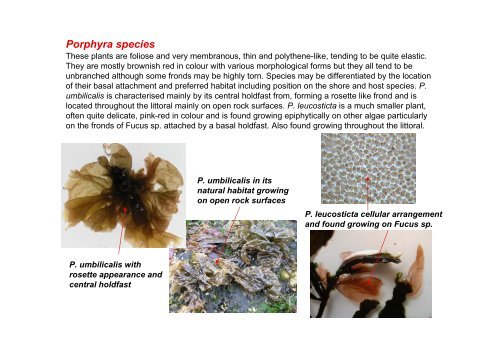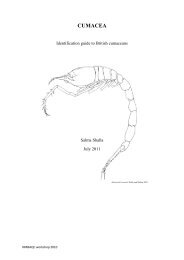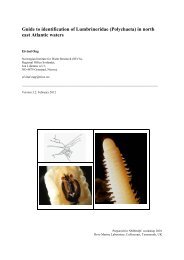s A Field Guide to the British Seaweeds - NMBAQC
s A Field Guide to the British Seaweeds - NMBAQC
s A Field Guide to the British Seaweeds - NMBAQC
Create successful ePaper yourself
Turn your PDF publications into a flip-book with our unique Google optimized e-Paper software.
Porphyra species<br />
These plants are foliose and very membranous, thin and poly<strong>the</strong>ne-like, tending <strong>to</strong> be quite elastic.<br />
They are mostly brownish red in colour with various morphological forms but <strong>the</strong>y all tend <strong>to</strong> be<br />
unbranched although some fronds may be highly <strong>to</strong>rn. Species may be differentiated by <strong>the</strong> location<br />
of <strong>the</strong>ir basal attachment and preferred habitat including position on <strong>the</strong> shore and host species. P.<br />
umbilicalis is characterised mainly by its central holdfast from, forming a rosette like frond and is<br />
located throughout <strong>the</strong> lit<strong>to</strong>ral mainly on open rock surfaces. P. leucosticta is a much smaller plant,<br />
often quite delicate, pink-red in colour and is found growing epiphytically on o<strong>the</strong>r algae particularly<br />
on <strong>the</strong> fronds of Fucus sp. attached by a basal holdfast. Also found growing throughout <strong>the</strong> lit<strong>to</strong>ral.<br />
P. umbilicalis with<br />
rosette appearance and<br />
central holdfast<br />
P. umbilicalis in its<br />
natural habitat growing<br />
on open rock surfaces<br />
P. leucosticta cellular arrangement<br />
and found growing on Fucus sp.




